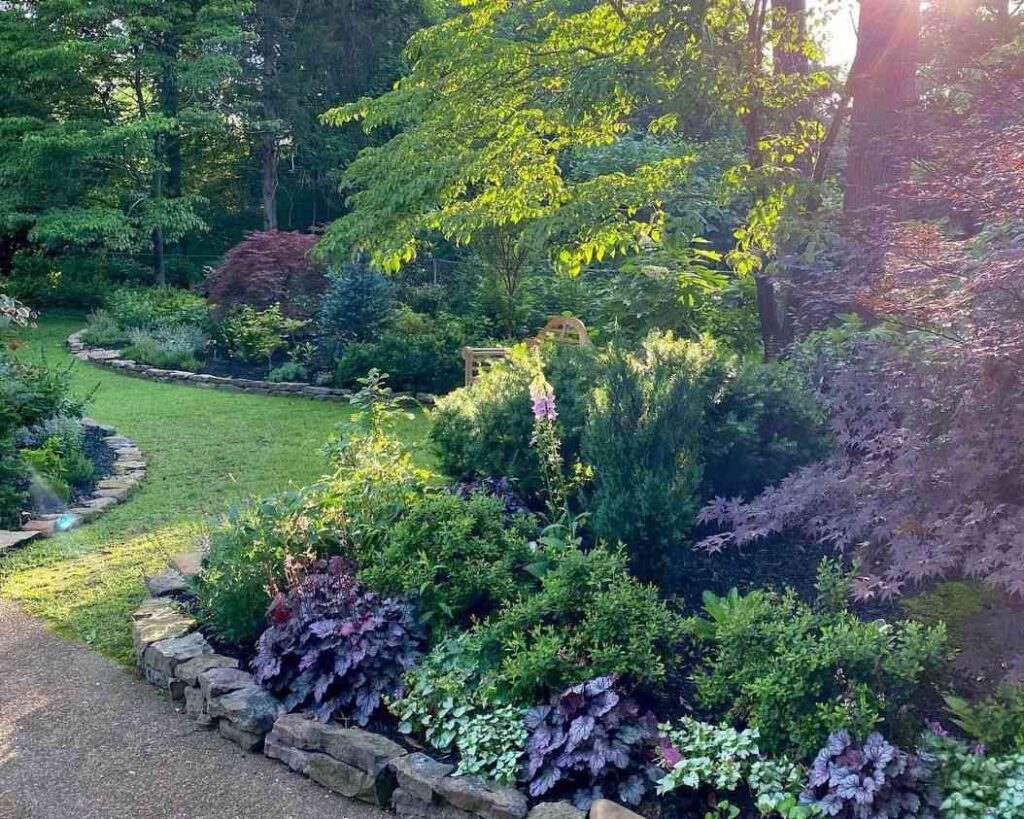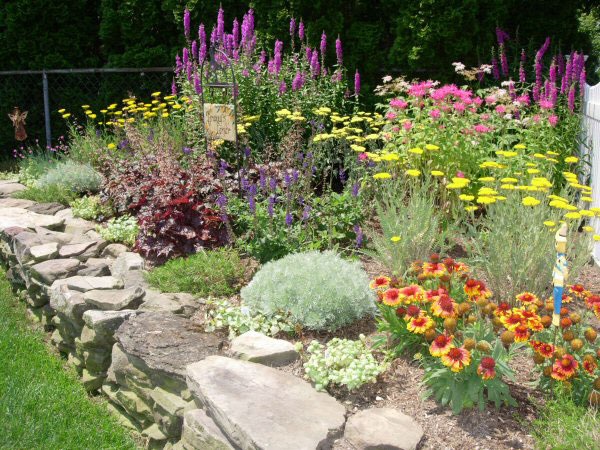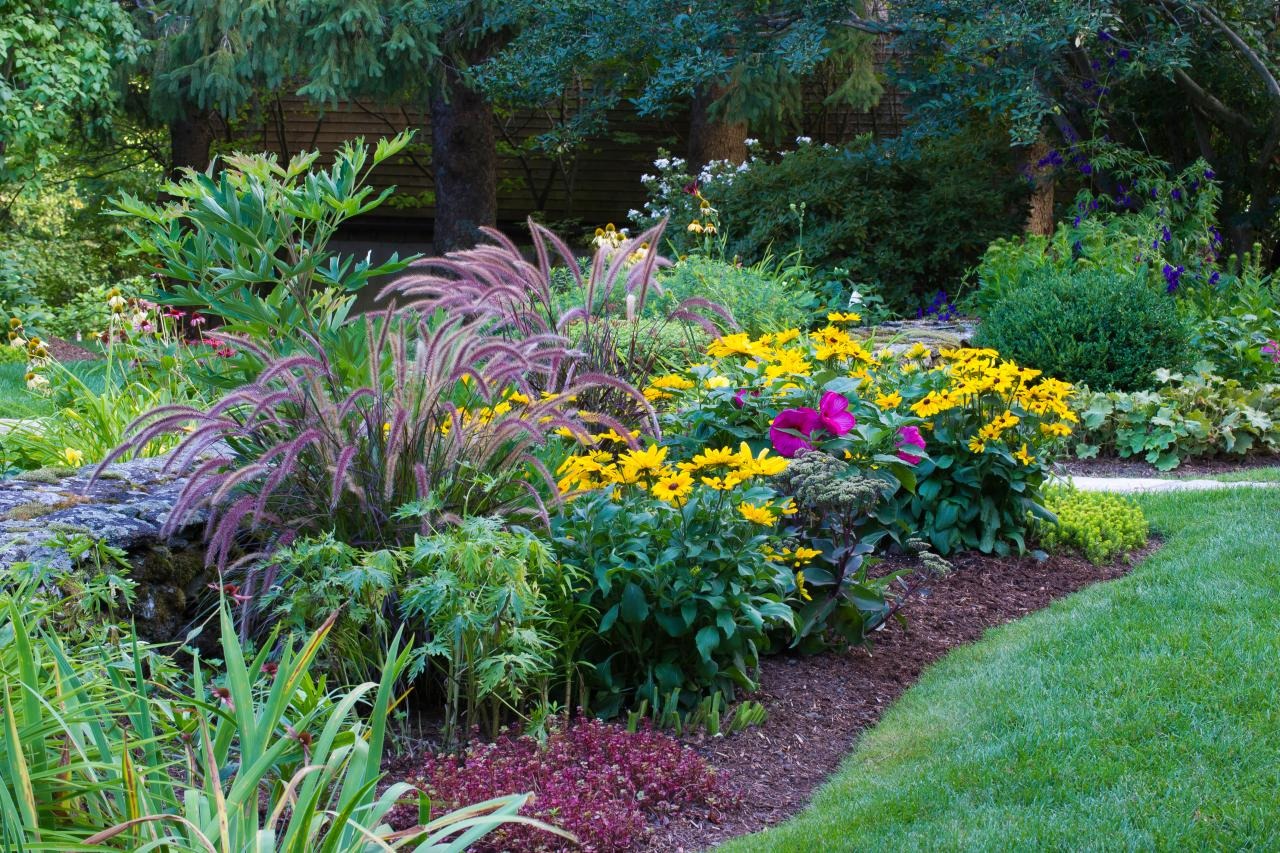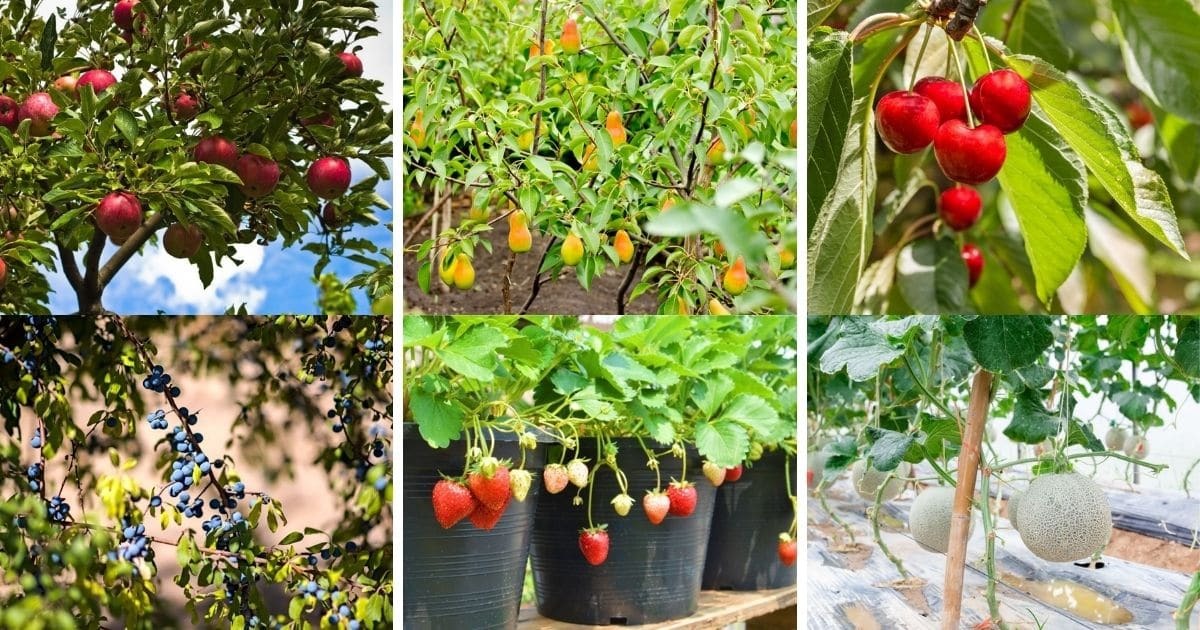Some of the most succulent perennial gardens look like they’re happening, don’t they? Lush cottage-style flower beds bursting with colors, popping up out of nowhere on their own, aren’t they? Well, not exactly.
Perennial gardens can certainly become very easy and low maintenance over time, but before that effortless magical look happens, there are a lot of plans and decisions to be made. More precisely, the place where you plant things is almost as important as what you decide to plant.
Here are 22 suggestions and ideas to help you plan the layout and design of a beautiful perennial flower garden.
How to Design a Perennial Flower Garden
There are some specific things to consider when choosing what and where to plant:
- When will this plant bloom and for how long?
- How much growth (height, spread, bloom size) does it produce during the peak of the season?
- Do its flowers or foliage change color over time, and if so, when and what colors can you expect?
- What are the different colors available in the cultivars of this plant?
- Does this plant have a desirable scent?
- Does it have specific light or soil needs that are different from nearby plants?
- Is it vulnerable to pests and, if so, will it attract pests that could damage adjacent plants?
- Does this plant have flowers that are vulnerable to wind, rain, or heat damage?
Keep a notebook listing the plants you are considering, then do your research. Read the labels at the nursery and ask employees or other gardeners for advice.

01. Get an overview
Look at your garden from afar and see how the plantings work together. When we work in the garden, we are often “up close and personal” with the plants, but the design requires taking a step back to get a more complete perspective of your space. This is especially important if you have trees and tall shrubs in your landscape—consider the full impact of your design. Take a step back to get an overview and see how your plantings balance and blend into each other.
02. Plant bulbs for early spring Color
You can’t beat spring bulbs for low-effort color in the spring. But, they only bloom for a few weeks. By planting your spring bulbs (crocuses, daffodils, hyacinths and tulips) near your hostas and daylilies, the bulb foliage will die once the foliage of these late-season plants begins to emerge. This allows a great use of space and fills the gaps between the flowering seasons.
03. Arrange Plants By Height
Most of the time, you will want to put taller plants at the back of the bed and shorter plants at the front. Exceptions can be plants with very delicate flower sprays, or tall slender stems with flowers at the very top, which can go ahead even if their stems are taller than the plants in front of which they are located (such as alliums, salvias, coral bells/heucheras, veronica, columbines, hyacinths, or forget-me-nots).
04. Create Visual Patterns with Color
Planting to create a color pattern to attract the eye is a well-known trick of landscape designers. See how the purple foliage of these heucheras creates a dynamic pattern that leads the eye through the garden and connects them with the purple tones of Japanese maples. The purple foliage of these heucheras and Japanese maples creates a dynamic pattern that attracts the eye.

05. Strive for an Interesting Shape and Texture
Plant strategically to create a vivid combination of shapes and textures. Even a simple shade garden can balance the rounded or pointed sturdy leaves of hostas with the delicate textures of heuchera leaves and flowers, airy astilbes and prickly ferns. Also consider how the texture of a plant can change over the season. The delicate and airy texture of the heuchera flowers (coral bells) contrasts perfectly with the heavier shapes and textures of the hostas in this shade garden.
06. Try Color Blocking
Some gardeners like to have a wide variety of plants in their mixed perennial beds. But there is something to be said for the dramatic impact of a large area flowered in bright colors, making your garden a seasonal spectacle. This is especially effective with long-flowering perennial flowers such as anchovies, echinacea, hydrangeas, dianthus, chrysanthemums, etc.
Plant other flowering plants nearby that will add color when these plugs are done; try chrysanthemums or perennial snapdragons in front of your echinacea.
07. Design with Foliage
Perennial flowers do not always have long flowering seasons, so learning which plants have colorful or interesting foliage can help you design a garden that remains rich and interesting throughout the seasons.
The Heucheras come in a rainbow of colors with leaves of different shapes and do well in the sun or in the shade. Hostas and daphne are available in variegated varieties that add visual depth and interest. Silver tones can come from artemisia or Brunner. The beautifully formed leaves of oak-leaved hydrangeas and Amsonia provide a bright autumn color.
08. Create Colorful Shade Beds
There are a lot of perennials that will bloom with pleasure in partial shade, so your shade beds don’t have to be all hostas and astilbes! Perennial geraniums sneak among the plants in search of dappled sun, and other colorful partial shade lovers include digitalis, alliums, irises, heucheras and primroses. Find out how the purple tones and lace texture of the Japanese-painted fern complement the “Rozanne” geraniums and the “Millennium” alliums here.

09. Time Your Flowers Correctly
One of the biggest challenges in garden design is finding ways to make flowers bloom consistently throughout the season. But, consider how some plants can have a more dramatic impact than others.
Maybe you want your roses to play the main role. Maybe your peonies are the pride of the neighborhood. Let these David Austin pink roses shine by keeping other early flowering perennials nearby to a minimum, unless you want an all-pink garden, in which matter, go for it! With a little practice and research, you can plant strategically to highlight certain plants at the height of their flowering season.
10. Flower Ground Cover
Floor coverings can be a great way to fill in empty spaces and add slow-growing beauty to your beds. Some bloom in spring (such as sweet woodruffs, epimedes or creeping phlox), others in summer (spreading dianthus), and others in autumn (such as creeping sedums which come in several colors, or peacock plumbago with its bright cobalt blue flowers). Depending on your climate, there are many to choose from.
11. Experiment with Contrasting Colors
The opposites on the color wheel create vibrant and spectacular contrasts in the garden. Combine purples and yellows, oranges and blues, or reds and greens, including variations like magenta and chartreuse for dynamic color combinations.
12. Balance Warm and Cold Colors
Many gardeners like to have a garden of cold colors (blues, purples, pinks) while some appreciate warm and vibrant colors such as reds, yellows and oranges. Having a mix of warm and cold palettes allows for maximum visual appeal. You can mix them in a bed or have a cool section next to a warm section. The possibilities are endless and can include both flowers and foliage.
13. Choose Perennials that are easy to divide
The perennial division is usually an annual task for the avid gardener. Some perennials will tend to show a decrease in vitality in their flowering if they are not divided, as the roots or tubers may be crowded. Most types of irises need to be divided every 3 years, as do daylilies and hostas; all three are very easy to divide. Some plants benefit from a single annual division, such as the artemisia silver mound.’Once you divide them (mid to after autumn is the best time), you can replant the divisions immediately.
14. Opt For End-of-season Flowers
Many gardeners find it difficult to keep a vibrant palette of flowers for three seasons. Do not neglect to plant late-flowering perennials, especially in places where other perennials will have stopped blooming for the season. Anemones are a charming sight in autumn with their delicate pinks and whites floating above the flower bed like fairies. The deep blues of monkshood also add a dramatic color.



